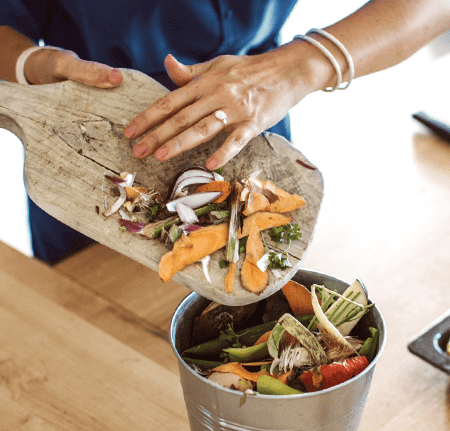
The Difference Between Commercial and At-Home Composting
While different, both at-home and commercial composting recycle organic waste, like yard trimmings and food, into a nutrient-rich soil amendment, which helps preserve natural resources, reduces water consumption, and more.Byline: BTB Editor
November 3, 2021 / Time to read: 5 minAccording to
Recycling organic waste into compost creates a nutrient-rich soil amendment, which helps preserve natural resources, reduces water consumption, and is a more sustainable option for managing food waste.
As a leader in the environmental services industry,
While commercial composting and at-home composting are built on the same foundation, the processes are different.
Commercial Composting
In commercial composting, the process begins with the collection of food and yard waste from residents’ homes or businesses, which is delivered to the facility.
Contamination is removed, and the remaining material is ground to six inches or less in size for composting. Water is then added to increase the moisture content to roughly 50-60%. The material is then placed into the compost process.
At Republic we utilize a variety of different compost technologies at our facilities. We operate six windrow compost facilities that are more traditional and use equipment to turn the piles. Six of our compost facilities are aerated static pile compost facilities that continuously add air using blowers to speed up the process and reduce odors.
Republic Services is actively addressing the yard and food waste issue by recently opening its innovative Otay compost facility in Chula Vista, CA. Our Otay Compost Facility currently has the capability of processing up to 100 tons of organic waste daily and is the first facility of its kind powered entirely by solar in the state of California.
At-Home Composting
Composting at home can be as simple or as complicated as you want it to be. If you aren’t looking to make a big investment, you can start a simple compost bin using your food scraps and lawn clippings.
Here are some general guidelines for composting at home:
- Compost items like coffee grounds, fruits and vegetables, eggshells, tea bags, nutshells, yard waste, leaves, and more. Typically, with at-home composting, you can’t compost fats, meats, or dairy products. You’ll want to make sure you have a
good ratio of greens (like vegetable or fruit scraps and yard waste) and browns (like dead leaves and twigs). - Remember, water is essential – you can’t compost material that doesn’t have moisture.
- You’ll want to store food scraps in a place that makes it convenient to compost while you’re cooking or cleaning your kitchen. You don’t need a fancy scrap bucket, but make sure it has a tight seal to reduce odor.
- Don’t forget that you’ll also need an outdoor compost bin, which you can purchase or
build on your own. Your outdoor compost bin is how you will mix the compost to add air—this helps avoid odor. - Once you’ve started your compost, you’ll want to monitor for warning signs that it is out of balance. Your compost shouldn’t attract bugs or rodents or produce a strong odor. If it is, then you’ll know that it’s time to adjust the mix of greens and browns you’re adding to your bin.
Composting at home can be easy, fun, and a great way to live a more sustainable lifestyle if you don’t have a composting service available to you!
Interested in learning more? Visit
